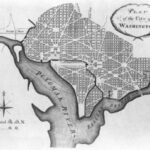We all know of Annapolis, Maryland as the home of the US Naval Academy and the State Capital, but the history of Annapolis as a settled community goes way back to 1649, way before the United States was even a dream in anyone’s imagination
The Puritans were a large group in the 1600’s, settled in many places besides New England and one of those places was Virginia. Of course, with the religious thought of the day, if you were in the minority, you were not welcome and the Puritans, led by William Stone were forced to leave Virginia. They were welcomed in Maryland by Lord Baltimore in 1648. They settled in the area and named their colony Providence. William Stone went on to be named Governor of Maryland Colony by Lord Baltimore and made quite a contribution to history when in 1649 he signed the Religious Tolerance Act.
The location of the original settlement turned out to be a bad choice, so the settlers moved further south to a more protected harbor and here is where they prospered and became wealthy, mostly by the slave trade.
In 1694 the town was named Annapolis after princess Ann of England. It was an extremely prosperous town for quite a while, but as it happens so many times in history, it was not to remain so. Baltimore also had a harbor and in 1780 Baltimore was made a port of entry, leaving Annapolis with just one industry, oysters.
Annapolis has played a major roll in many phases of American History. It was the temporary capital of the United States in 1783, General Washington resigned his commission in Annapolis in 1783. During the Civil War Annapolis was the site of a large prison camp as well as a hospital where soldiers from both sides were treated.
The Naval Academy was founded in 1845 on the grounds of a former army fort. During the Civil War, the academy was moved to Rhode Island and was brought back to Annapolis in 1865.
The Naval Academy is not the only institution of higher learning in Annapolis. St. John’s College, a four-year liberal arts college, was founded in 1784.
During the 1800’s many grand houses were built in Annapolis and many of them still exist today and are either museums or Bed And Breakfasts. The people of Annapolis take great pride in their historic building as well they should, they have done a suburb job in maintaining and restoring them to their original states.
Today Annapolis is a thriving city of more than 30,000 and is again a port of entry and handles most of the produce from the farms of eastern Maryland. And the sea food industry is still a major industry with many packing plants. There are also many other industries producing everything from sail boats to aerospace products and of course, tourism is still a big part of the economy of Annapolis.




